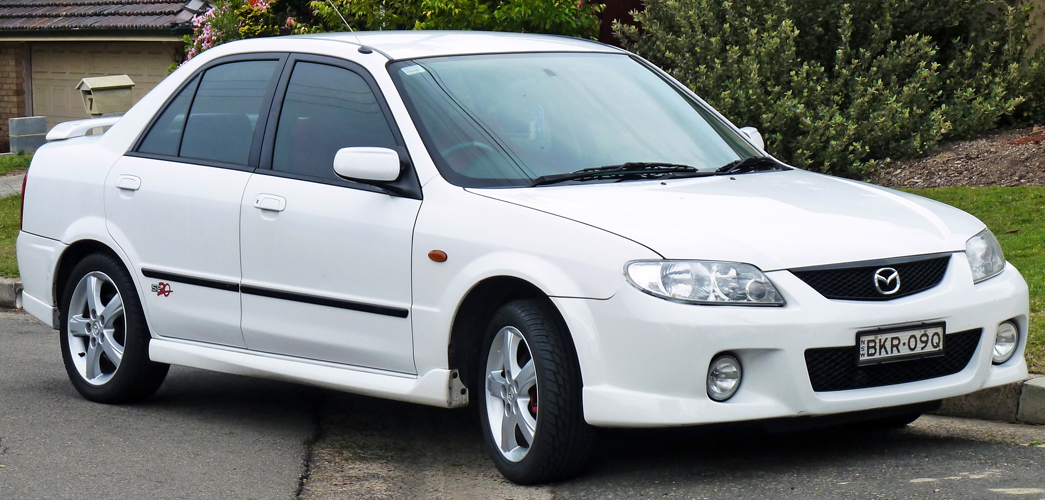The Mazda 323- Familia, also known as the Mazda Familia in some markets, has gone through various production models over the years. Below, I’ll provide a brief overview of each production model up to my last knowledge update in September 2021. Please note that there may have been additional developments or models introduced after that date.
- First Generation (1963-1967):
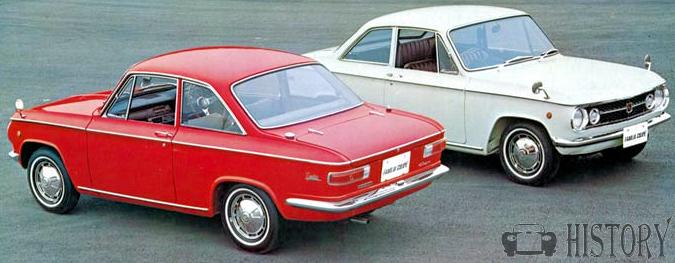
- The first-generation Mazda Familia/323 was introduced in 1963.
- It was a compact car available in various body styles, including sedan, coupe, and wagon.
- This model set the foundation for future Mazda compact cars.
- Body Styles: The first-generation Familia was available in several body styles, including a two-door sedan, four-door sedan, and a wagon (estate) version. These body styles catered to various customer preferences.
- Design: The design of the first-generation Familia was relatively simple and understated, reflecting the styling trends of the early 1960s. It featured clean lines and a compact form factor.
- Engine: Initially, the Familia was powered by a 782 cc inline-four-cylinder engine, which was relatively small in displacement. This engine was paired with a manual transmission.
- Front-Wheel Drive: One of the notable features of the first-generation Familia was its front-wheel-drive layout. This layout was somewhat unconventional at the time, as many compact cars were rear-wheel drive.
- Utility: The wagon (estate) version of the Familia offered practicality for families and additional cargo space. This body style was suitable for various needs, including carrying passengers and goods.
- Successor to the Mazda R360: The first-generation Familia replaced the Mazda R360 as Mazda’s primary compact car offering. It represented Mazda’s continued expansion into the passenger car market.
- Global Sales: While initially intended for the domestic Japanese market, the Mazda Familia was later exported to various international markets, contributing to Mazda’s global presence.
- Legacy: The first-generation Mazda Familia played a pivotal role in establishing Mazda as a manufacturer of affordable and reliable compact cars. Its success laid the groundwork for subsequent generations of the Familia/323 and other Mazda vehicles.
2. Second Generation (1967-1970)

- The second-generation Mazda 323- Familia featured updated styling and improved performance.
- It continued to be available in various body styles.
- Body Styles: The second-generation Familia was available in various body styles, including a two-door sedan, four-door sedan, and wagon (estate) versions. These options provided versatility to cater to different customer needs.
- Design: The design of the second-generation Familia featured a more modern and streamlined appearance compared to its predecessor. It incorporated elements of the era’s styling trends, with smoother lines and updated details.
- Engine: The second-generation Familia was equipped with a range of engines, which included both gasoline and diesel options. These engines had larger displacements than those of the first-generation model, providing improved performance.
- Front-Wheel Drive: Similar to the first-generation Familia, the second-generation model continued to use a front-wheel-drive layout. This layout contributed to better handling and interior space utilization.
- Increased Global Presence: During this generation, Mazda expanded its export efforts, leading to the Familia being sold in more international markets. This expansion contributed to Mazda’s growth as a global automotive brand.
- Technology: Advancements in technology and engineering were evident in the second-generation Familia, with improvements in engine efficiency and reliability.
- Safety: Safety considerations were becoming more important in the automotive industry, and some second-generation Familia models featured enhanced safety features relative to earlier generations.
- Legacy: The second-generation Mazda Familia further solidified Mazda’s position as a manufacturer of compact and reliable vehicles. Its success in both domestic and international markets helped establish Mazda as a reputable automaker.
3. Third Generation (1970-1977):
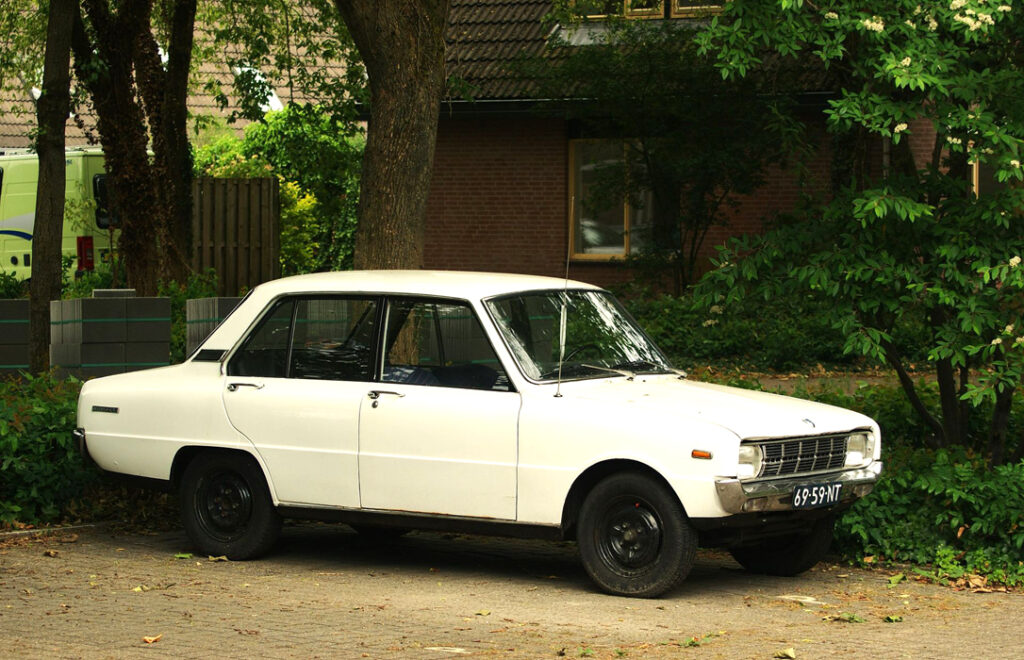
- The Mazda 323- Familia third-generation model saw further updates to its design and mechanical features.
- This generation was available as a sedan, wagon, and a rotary engine variant called the Mazda R100.
- Body Styles: The third-generation Familia was available in various body styles, including a two-door sedan, four-door sedan, wagon (estate), and a sporty coupe version. This wide range of body styles provided versatility and options for different customer preferences.
- Design: The design of the third-generation Familia was a departure from the previous generation, featuring a more modern and angular appearance. It incorporated elements of the era’s design trends, with a squared-off shape and bold lines.
- Engine: The third-generation Familia offered a variety of engines, including both gasoline and diesel options. These engines were more powerful and efficient than those of the previous generations, contributing to improved performance.
- Front-Wheel Drive: Like its predecessors, this generation continued to feature a front-wheel-drive layout, which was becoming more common in compact cars.
- Global Expansion: Mazda continued to expand its international presence during this generation, exporting the Familia/323 to more markets around the world. It was known by various names in different regions, such as the Mazda GLC (Great Little Car) in North America.
- Technology: Advancements in technology were evident in this generation, with improved engine technology and features. Some models may have included amenities like air conditioning and other comfort features.
- Sporty Variants: The third-generation Familia/323 introduced sportier variants, such as the Mazda Familia Rotary Coupe, which featured a rotary engine and sporty styling.
- Legacy: This generation of the Mazda Familia/323 contributed significantly to Mazda’s reputation as a manufacturer of compact and reliable vehicles. Its success in global markets further solidified Mazda’s presence in the automotive industry.
4. Fourth Generation (1977-1980):
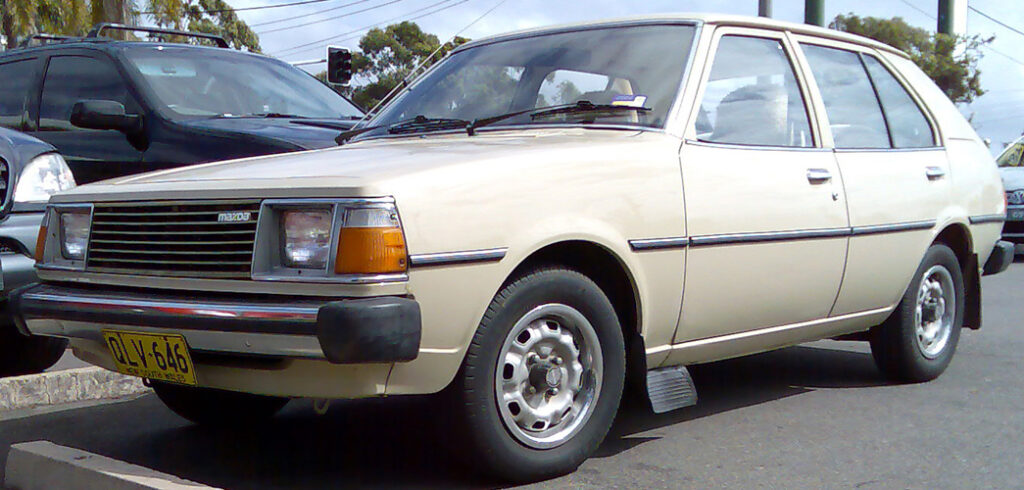
- The fourth-generation Mazda 323- Familia featured more modern styling and introduced front-wheel drive.
- It was available in various body styles, including hatchback and wagon.
- Body Styles: The fourth-generation Familia/323 was available in various body styles, including a three-door hatchback, four-door sedan, and five-door wagon (estate). These body styles catered to different customer preferences and needs.
- Design: The design of the fourth-generation Familia featured a more angular and boxy appearance compared to the previous generation. It reflected the design trends of the late 1970s and early 1980s.
- Engine: This generation offered a range of engines, including inline-four-cylinder gasoline engines. Depending on the market and model variant, engine options and displacements could vary.
- Front-Wheel Drive: Like its predecessors, this generation continued to feature a front-wheel-drive layout, which was becoming increasingly common in compact cars.
- Global Presence: Mazda continued to expand its global presence during this generation, exporting the Mazda 323- Familia to various international markets. The model might have been sold under different names in different regions.
- Technological Advancements: The fourth-generation Familia/323 may have introduced technological advancements in terms of engine efficiency, emissions control, and improved safety features compared to earlier generations.
- Legacy: This generation of the Mazda 323- Familia contributed to Mazda’s reputation as a manufacturer of compact and practical vehicles. Its success in various markets helped Mazda solidify its presence in the global automotive industry.
5. Fifth Generation (1980-1985):
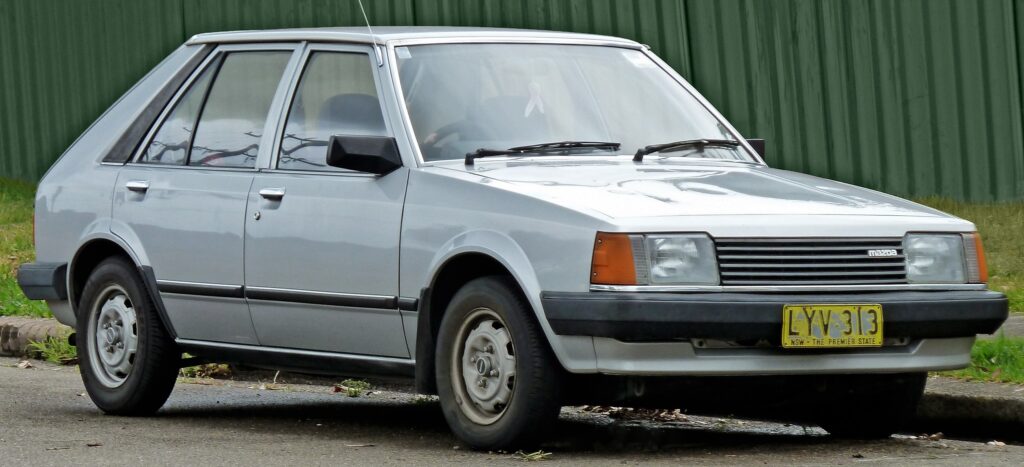
- The fifth-generation model continued with front-wheel drive and introduced a sportier appearance.
- It was offered in both gasoline and diesel engine options.
- Body Styles: The fifth-generation Mazda 323- Familia was available in various body styles, including a three-door hatchback, four-door sedan, and five-door wagon (estate). These body styles catered to different customer preferences and practical needs.
- Design: The design of the fifth-generation Familia evolved to feature a more modern and aerodynamic appearance compared to its predecessor. It incorporated smoother lines and a more contemporary look.
- Engines: This generation offered a range of engines, including inline-four-cylinder gasoline engines. Depending on the market and model variant, engine options and displacements could vary, with a focus on improving efficiency and performance.
- Front-Wheel Drive: As with previous generations, the fifth-generation Mazda 323- Familia continued to utilize a front-wheel-drive layout, which was becoming standard in compact cars.
- Global Presence: Mazda expanded its global presence further during this generation, exporting the Mazda 323- Familia to various international markets. The model might have been sold under different names in different regions.
- Technological Advancements: The fifth-generation Familia/323 may have introduced advancements in terms of engine technology, emissions control, and improved safety features compared to earlier generations.
- Sporty Variants: Some markets may have seen the introduction of sportier variants, such as the Mazda 323- Familia GT-X, which featured sport-tuned suspension and a more powerful engine.
- Legacy: This generation contributed to Mazda’s reputation as a manufacturer of compact and practical vehicles with a focus on design and efficiency. Its success in various markets helped Mazda maintain a strong presence in the global automotive industry.
6. Sixth Generation (1985-1990):
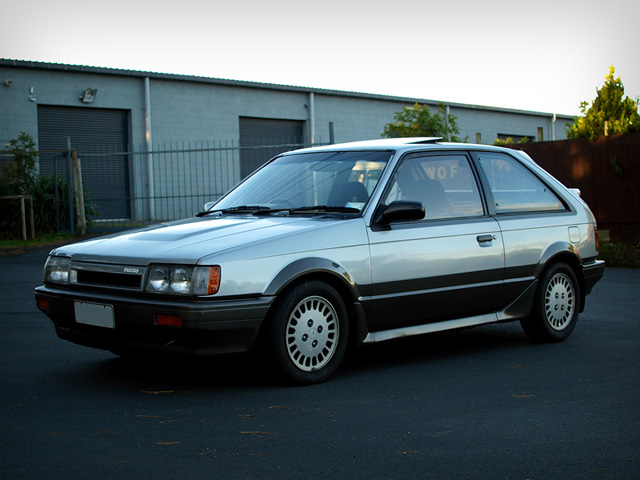
- The sixth-generation Mazda 323- Familia featured a more aerodynamic design.
- This generation included the sporty Mazda 323 GTX with all-wheel drive.
- Body Styles: The sixth-generation Familia/323 was available in various body styles, including a three-door hatchback, four-door sedan, five-door wagon (estate), and a sporty five-door liftback. These body styles catered to a wide range of customer preferences and practical needs.
- Design: The design of the sixth-generation Familia featured a more aerodynamic and modern appearance compared to its predecessor. It incorporated smoother lines, a sloping front end, and improved aerodynamics for enhanced fuel efficiency.
- Engines: This generation offered a variety of engines, including inline-four-cylinder gasoline engines. Engine options and displacements could vary depending on the market and model variant, with an emphasis on improved performance and efficiency.
- Front-Wheel Drive: As with previous generations, the sixth-generation Familia/323 continued to feature a front-wheel-drive layout, which was becoming standard in compact cars.
- Technology: This generation introduced technological advancements, including improved suspension systems for better handling and comfort. Some models may have featured electronic fuel injection (EFI) for enhanced engine efficiency.
- Safety Features: Depending on the market and trim level, this generation may have included improved safety features, such as enhanced braking systems and seatbelt options.
- Sporty Variants: Some markets may have seen the introduction of sportier variants, such as the Mazda Familia GT and GT-X, which featured sport-tuned suspension and more powerful engines.
- Global Presence: Mazda continued to export the Familia/323 to various international markets during this generation, consolidating its presence as a global automaker.
- Legacy: The sixth generation of the Mazda Familia/323 further solidified Mazda’s reputation for producing compact, efficient, and stylish vehicles. Its success in various markets contributed to Mazda’s standing in the automotive industry.

***Download repair manual FREE***




1985-1989-Mazda-323-Familia (PDF)
7. Seventh Generation (1990-1994):
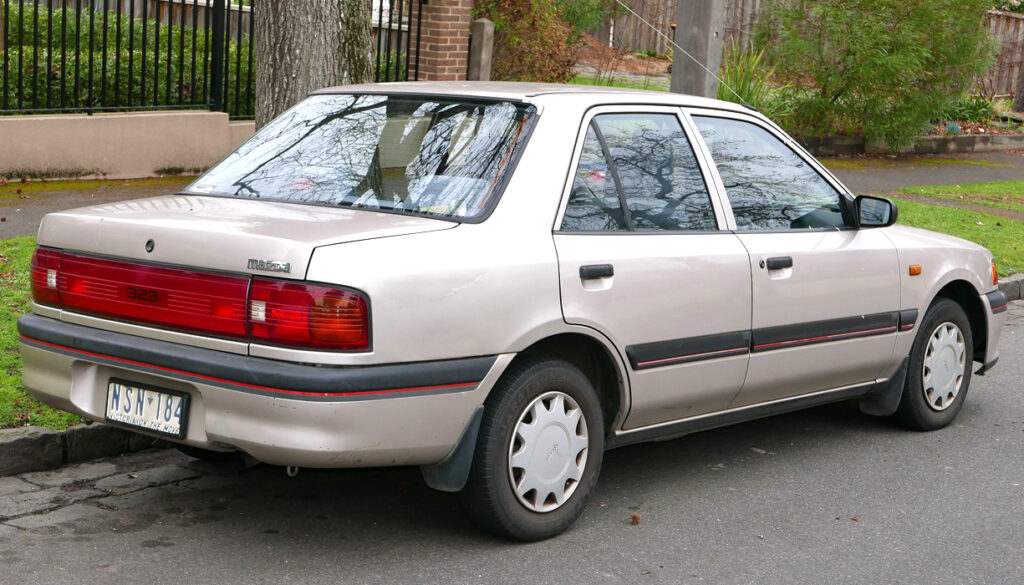

- The seventh-generation model featured a more rounded and modern design.
- It included various body styles, including sedan, hatchback, and wagon.
- Body Styles: The seventh-generation Mazda 323- Familia was available in various body styles, including a three-door hatchback, four-door sedan, five-door wagon (estate), and a sportier version known as the Mazda Familia GT-X or GTX. These body styles catered to different customer preferences and needs.
- Design: The design of the seventh-generation Familia featured a more rounded and modern appearance compared to its predecessor. It incorporated smoother lines and improved aerodynamics for better fuel efficiency.
- Engines: This generation offered a range of engines, including inline-four-cylinder gasoline engines with different displacements. Some markets also had diesel engine options available.
- Front-Wheel Drive: Like previous generations, this generation continued to feature front-wheel drive, which was common in compact cars.
- Technology: The seventh-generation Familia introduced advancements in technology, including improved suspension systems for better ride quality and handling. Some models may have featured electronic fuel injection (EFI) for enhanced engine performance and efficiency.
- Safety Features: Depending on the market and trim level, this generation may have included improved safety features, such as anti-lock braking systems (ABS) and airbags.
- Global Presence: Mazda continued to export the Familia/323 to various international markets during this generation, expanding its reach as a global automaker.
- Sporty Variants: The Mazda 323- Familia GT-X or GTX was a sportier variant that featured a more powerful engine, sport-tuned suspension, and distinctive styling elements.
- Legacy: The seventh generation of the Mazda Familia/323 further solidified Mazda’s reputation for producing compact, efficient, and stylish vehicles. Its success in various markets contributed to Mazda’s standing in the automotive industry during the early 1990s.




***Download repair manual FREE***




1989-1995 Mazda-323 BG Series Factory (PDF)
8. Eighth Generation (1994-1998):
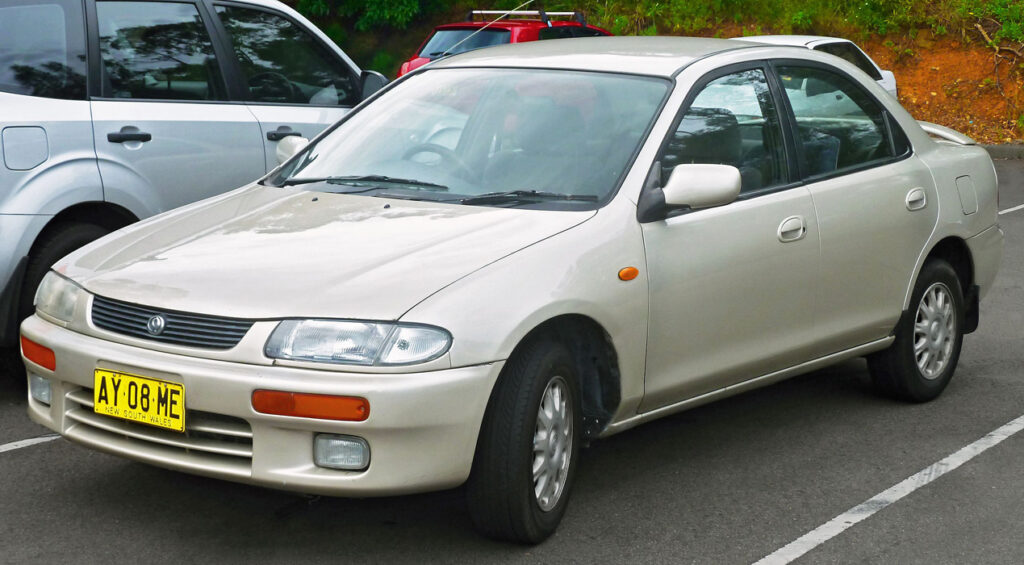

- The eighth-generation Mazda 323- Familia saw further refinements in design and safety features.
- It continued to be offered in multiple body styles.
- Body Styles: The eighth-generation Mazda 323- Familia was available in various body styles, including a three-door hatchback, four-door sedan, and five-door wagon (estate). These body styles provided a range of options for different customer preferences.
- Design: The design of the eighth-generation Familia featured more rounded and contemporary styling compared to its predecessor. It incorporated smoother lines and a sleeker appearance.
- Engines: This generation offered a variety of engines, including inline-four-cylinder gasoline engines with different displacements. The range of engine options was designed to provide a balance of performance and fuel efficiency.
- Front-Wheel Drive: As with previous generations, this generation continued to feature front-wheel drive, which was common in compact cars.
- Technology: Advancements in technology were evident in the eighth-generation Familia. Some models may have featured electronic fuel injection (EFI) for improved engine performance and efficiency. Additionally, advancements in suspension design contributed to better ride quality and handling.
- Safety Features: Depending on the market and trim level, this generation may have included safety features such as anti-lock braking systems (ABS) and airbags, further enhancing occupant safety.
- Global Presence: Mazda continued to export the Familia/323 to various international markets during this generation, maintaining its status as a global automaker.
- Sporty Variants: The Mazda 323- Familia GT or GT-X was a sportier variant that featured a more powerful engine, sport-tuned suspension, and distinctive styling elements.
- Legacy: The eighth generation of the Mazda Familia/323 contributed to Mazda’s reputation as a manufacturer of compact and practical vehicles. Its success in various markets continued to strengthen Mazda’s position in the automotive industry during the mid-1990s
9. Ninth Generation (1998-2003):
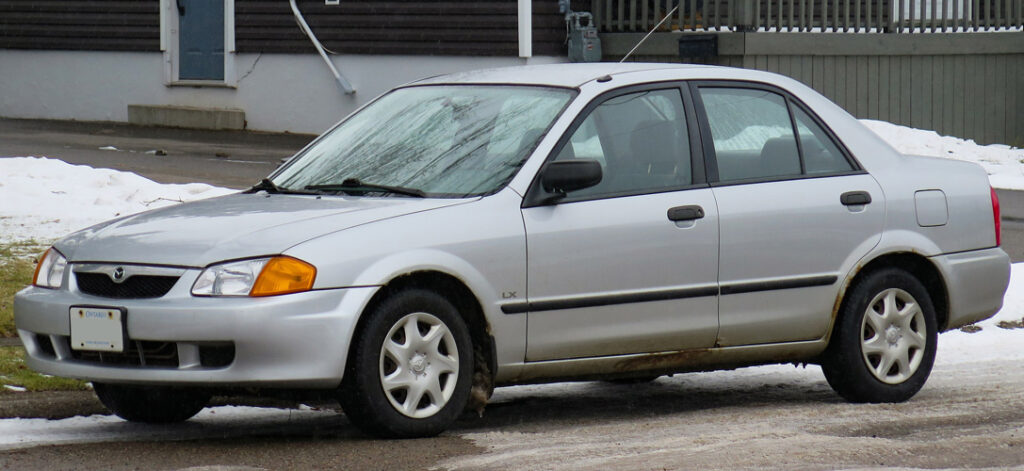

- The ninth-generation model featured a more angular and modern design.
- It was available with a range of engine options, including a diesel variant.
- Body Styles: The ninth-generation Mazda 323- Familia was available in various body styles, including a three-door hatchback, four-door sedan, and five-door wagon (estate). These body styles provided options for different customer preferences and needs.
- Design: The design of the ninth-generation Familia incorporated more modern and streamlined styling compared to its predecessor. It featured smoother lines, a sleeker profile, and a contemporary appearance.
- Engines: This generation offered a range of engines, including inline-four-cylinder gasoline engines with various displacements. These engines aimed to provide a balance of performance and fuel efficiency to meet evolving emission standards.
- Front-Wheel Drive: Like previous generations, this generation continued to feature front-wheel drive as the standard layout.
- Technology: The ninth-generation Mazda 323- Familia introduced technological advancements, including improvements in engine efficiency and electronic systems. Some models may have featured electronic fuel injection (EFI) for better performance and fuel economy.
- Safety Features: Depending on the market and trim level, this generation may have included safety features such as anti-lock braking systems (ABS), airbags, and improved crash safety engineering.
- Global Presence: Mazda 323- Familia continued to export the Familia/323 to various international markets during this generation, reinforcing its status as a global automaker.
- Sporty Variants: Sportier variants, such as the Mazda Familia Sport20, were available and featured more powerful engines, sport-tuned suspension, and sporty styling elements.
- Legacy: The ninth generation of the Mazda 323- Familia further contributed to Mazda’s reputation as a manufacturer of compact and practical vehicles with a focus on design, technology, and performance. Its success in various markets continued to strengthen Mazda’s position in the automotive industry during the late 1990s and early 2000s.
10. Tenth Generation (2003-2009):
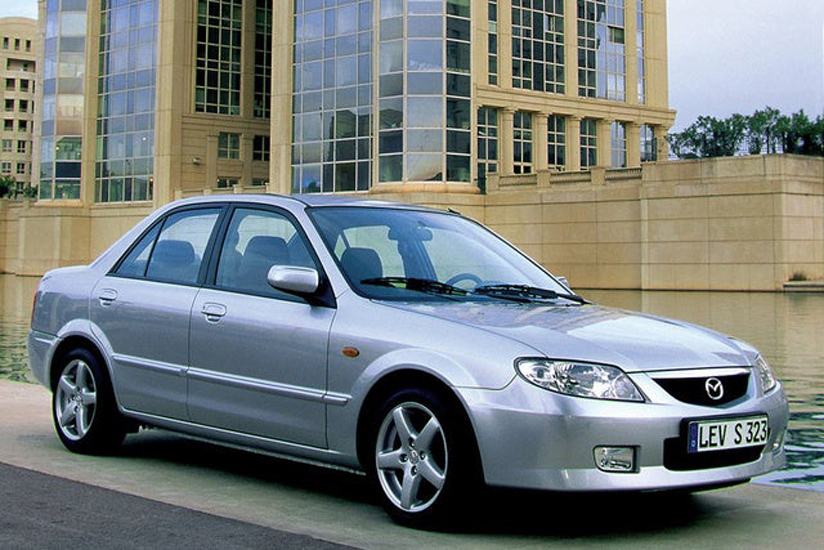

- The tenth-generation Mazda 323- Familia was known for its “Zoom-Zoom” design philosophy.
- It offered improved handling and performance characteristics.
- Body Styles: The tenth-generation Mazda 323- Familia was available in various body styles, including a four-door sedan and a five-door hatchback. These body styles catered to different customer preferences and market demands.
- Design: The design of the tenth-generation Familia featured Mazda’s “Zoom-Zoom” design philosophy, which emphasized a sporty and dynamic appearance. It incorporated bold lines, a distinctive front grille, and a modern overall design.
- Engines: This generation offered a range of engines, including inline-four-cylinder gasoline engines with varying displacements. Mazda focused on improving engine efficiency, performance, and fuel economy.
- Front-Wheel Drive: As with previous generations, this generation continued to feature front-wheel drive, which was common in compact cars.
- Technology: The tenth-generation Mazda 323- Familia introduced advancements in technology, including improved suspension systems for better handling and ride comfort. Electronic systems and engine management were enhanced for better performance and efficiency.
- Safety Features: Depending on the market and trim level, this generation may have included safety features such as anti-lock braking systems (ABS), airbags, and advanced safety engineering for crash protection.
- Global Presence: Mazda continued to export the Mazda 323- Familia to various international markets during this generation, maintaining its status as a global automaker.
- Legacy: The tenth generation of the Mazda 323- Familia further solidified Mazda’s reputation as a manufacturer of compact and stylish vehicles with a strong focus on performance and driving enjoyment. Its success in various markets contributed to Mazda’s standing in the automotive industry during the mid-2000s.
11. Eleventh Generation (2009-2013):
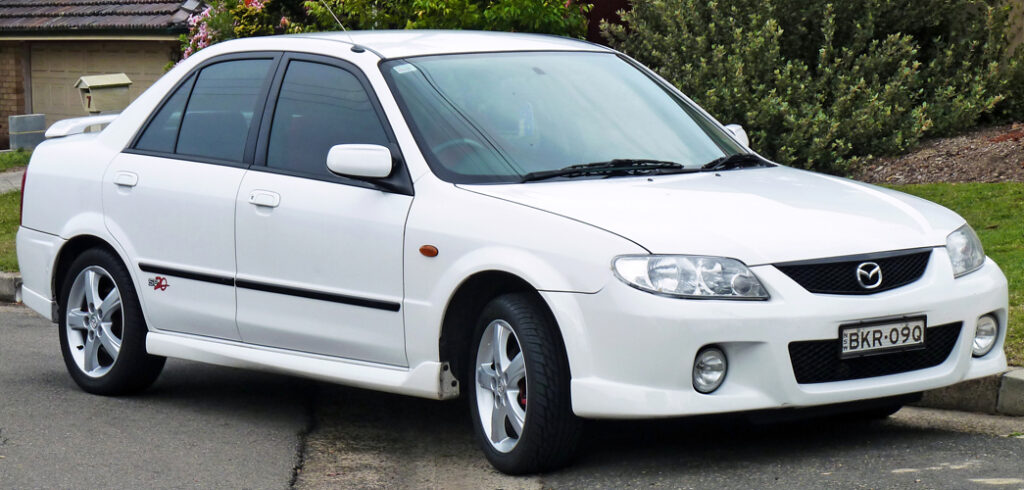

- The eleventh-generation model featured Mazda’s “Nagare” design language.
- It continued to be available in various body styles and had improved fuel efficiency.
- Body Styles: The eleventh-generation Mazda 323- Familia was available in various body styles, including a four-door sedan and a five-door hatchback. These body styles provided options for different customer preferences and market demands.
- Design: The design of the eleventh-generation Familia incorporated Mazda’s “Nagare” design language, which emphasized a flowing and dynamic appearance. It featured sweeping lines, a bold front grille, and a modern overall design.
- Engines: This generation offered a range of engines, including inline-four-cylinder gasoline engines with varying displacements. Mazda focused on improving engine efficiency, performance, and fuel economy while reducing emissions.
- Front-Wheel Drive: As with previous generations, this generation continued to feature front-wheel drive as the standard layout, which was common in compact cars.
- Technology: The eleventh-generation Mazda 323- Familia introduced advancements in technology, including improved suspension systems for better handling and ride comfort. Electronic systems and engine management were optimized for better performance and efficiency.
- SkyActiv Technology: Some models within this generation may have featured Mazda’s SkyActiv technology, which includes lightweight construction, improved aerodynamics, and efficient engines to enhance fuel efficiency and performance.
- Safety Features: Depending on the market and trim level, this generation may have included safety features such as advanced stability control systems, anti-lock braking systems (ABS), airbags, and reinforced safety structures.
- Global Presence: Mazda continued to export the Mazda 323- Familia to various international markets during this generation, solidifying its status as a global automaker.
- Legacy: The eleventh generation of the Mazda Mazda 323- Familia continued Mazda’s reputation for producing compact and stylish vehicles with a strong focus on efficiency, safety, and modern design. Its success in various markets contributed to Mazda’s standing in the automotive industry during the early 2010s.




***Download repair manual FREE***




Mazda-323-Familia-Factory-BJ (PDF)
Please note that the availability of specific models, features, and body styles may have varied by region and market. Additionally, there may have been updates or new generations introduced after my last knowledge update in September 2021. For the latest information on Mazda 323 Familia models, it’s recommended to visit Mazda’s official website or consult local Mazda dealerships.
Mazda Motor

